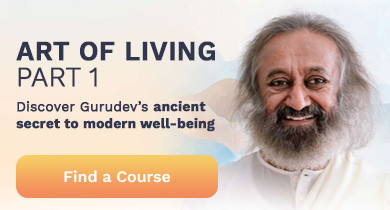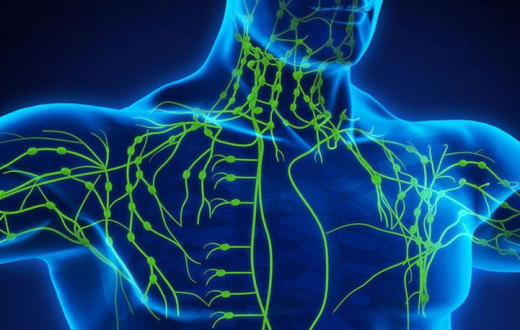By Elizabeth Herman| Posted: June 26, 2019
As you maintain your successful career, flying from one important meeting to another, have you ever noticed vertigo? The dizzy, nauseous feeling that comes from fear of heights is also a symptom of jet lag. According to the American Sleep Association, almost 93% of all travellers have had this debilitating syndrome at some point in their lives, and it can be caused not only by air travel, but by any disturbance to the biological clock.
According to the principles of Ayurveda, the most ancient and non-invasive school of medicine, jet lag is caused by an imbalance in the air element (vata) in the body. When your circadian rhythms are disturbed, so are your appetite and sleep, and you have problems with vata.
Disturbances like these often result in restlessness, drowsiness, and tiredness, and can last for days. Anything to balance the vata by way of food, yoga, meditation, breathing or massage before or after traveling can help you limit jet lag.
What’s a Dosha?
Vata (air or space), pitta (heat or fire) and kapha (earth) are biological energies. Human beings have unique constitutions, balancing these three differently. Any imbalance in them over a prolonged period of time can lead to uneasiness, weaknesses or disease. Air travel suddenly increases the vata energy, throwing off the delicate balance that keeps you steady and grounded.
Here’s a brief handbook for minimizing jet lag’s symptoms of dizziness, tiredness, and disorientation:
1) Food
A) Avoid spicy food during the flight at all costs. This could increase the pitta or heat element.
B) Have milk, ghee (clarified butter) in small quantities, fruits, boiled vegetables or any other naturally sweet food during the flight.
C) Avoid heavy non-vegetarian fare in-flight, to prevent indigestion.
D) Have sweet juices including grape, pomegranate, lemon, orange, or mango.
E) Eat foods rich in Vitamin A, E and C during flight.
F) Avoid alcohol, since it increases dehydration. In airplanes, the humidity is already generally lower.
2) Things to do
A) Alternate nostril breathing
5 minutes of alternate nostril breathing will ease your experience of take-off and landing. This breathing exercise clears your subtle nerve channels, balances the movement of energy through them, and leaves you feeling calm and refreshed.
Sit comfortably, spine erect and shoulders relaxed. Place your left hand on the left knee, palm open to the sky.
Take the index finger and middle finger of your right hand and place it in between your eyebrows. The ring finger and little finger will be on the left nostril, and the thumb on the right nostril.
Press your right thumb down on the right nostril and gently breathe out from the left.
Next, breathe in from the left nostril and then press it down gently with the ring finger and little finger. Remove the right thumb and breathe out from the right.
Again, breathe in from the right, close it with your thumb, and breathe out from the left.
These steps make one round. Repeat nine or more times, keeping eyes closed.
B) Yoga nidra
This meditation is known to give deep rest equivalent to four hours of sleep, but shouldn’t be a substitute for hours of nighttime sleep. A soothing, guided meditation you can listen to anywhere, Yoga nidra helps your body feel accustomed to new time zones.
C) Light airplane yoga
When on longer flights, some light postures can help you loosen up.
1. Seated spinal twist
Sit straight with spine erect and feet touching the floor.
Place your right hand on the left knee and left hand beside yourself behind the left hip
Inhale, lift up the spine and chest gently and twist gradually to your left and look over your left shoulder.
Hold the posture and breathe deeply into it. Relax the posture.
Repeat it with your left hand on your right knee.
2. Shoulder shrug
Come up to the edge of your seat. Sit with spine straight.
Place your hands on your knees. Straighten your arms.
Slowly raise your shoulders towards your ears with arms relaxed. Gently breathe in.
Once you’ve peaked, lower your shoulders and ease your shoulder blades. Exhale. Make sure your shoulders come around full circle.
All postures are best done mindfully while observing the breath and other sensations.
3. Massage your temples gently in a circular motion.
4. Relax facial muscles by cupping your cheeks and rotating them lightly, taking deep breaths.
5. Pull your earlobes up and down, for alert relaxation.
D) 2 mudras for jet lag
Mudra is Sanskrit for gesture, sign or mark. With these, you can drive away nausea.
Shunya mudra
Sit comfortably and close your eyes. Curl up the middle finger and touch the thumb to the tip of it. While holding this mudra, take a few deep breaths as you lightly constrict the throat. Repeat the cycle a few times and then relax your breath. Keep your eyes closed for a few minutes and observe the sensations.
Vayu mudra
You can also do vayu mudra, which helps reduce the vata in the body. For doing vayu mudra, the practice remains the same except that instead of curling up the middle finger as in step 2, curl up the index finger to touch the base of thumb.
Five helpful tips:

Drink a glass of water every hour during flights.
Try to shower if possible during stopovers.
Sun bathe before the flight, for good sunlight in your system before take off.
Use oil in bathing, especially if you travel a week or more. Oil massage the crown of your head, foot, naval area, and ears to stop the symptoms of jet lag.
Take natural, herbal supplements like Brahmi and Medhyarasayan to maintain balance and reduce restlessness in the body.
A previous version of this article was published on Shankara Ayurveda’s blog, with input from Dr. Lakshmi, a senior ayurvedic expert at Sri Sri College of Ayurvedic Science and Research Center, Bangalore, India.
This content is not intended to be a substitute for professional medical advice, diagnosis or treatment. Always seek the advice of your physician or other qualified health providers with any questions you may have regarding a medical condition.
By Elizabeth Herman - PhD in English, with concentrations in Rhetoric and Composition, and Literature, she offers writing support to clients, teaches locally, lives in Boone, NC, and volunteers for a better world.





























